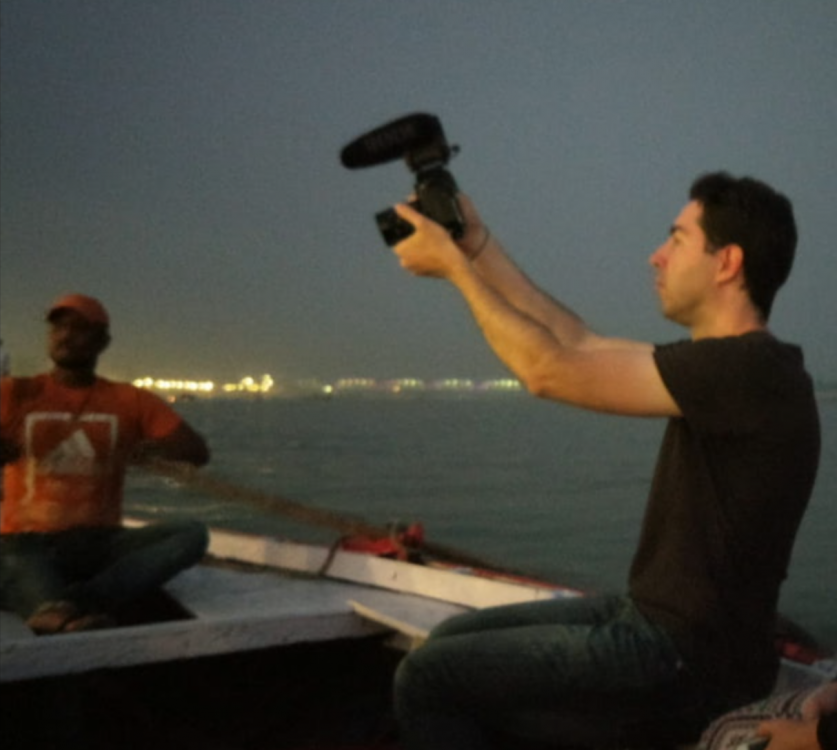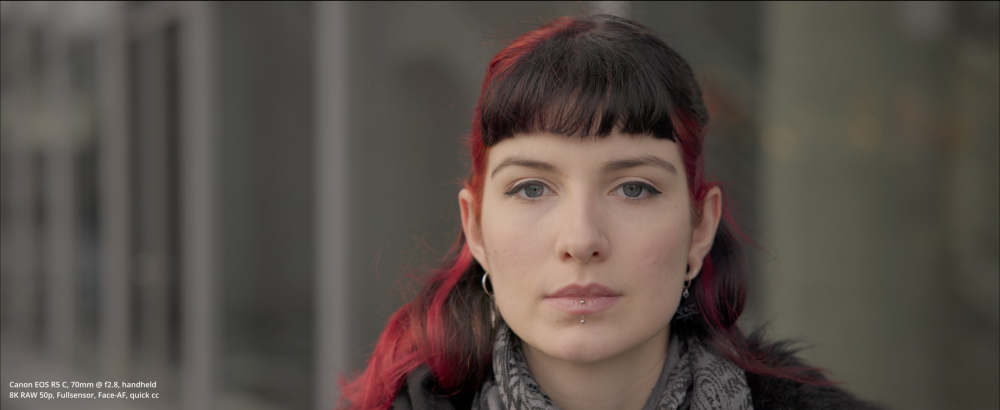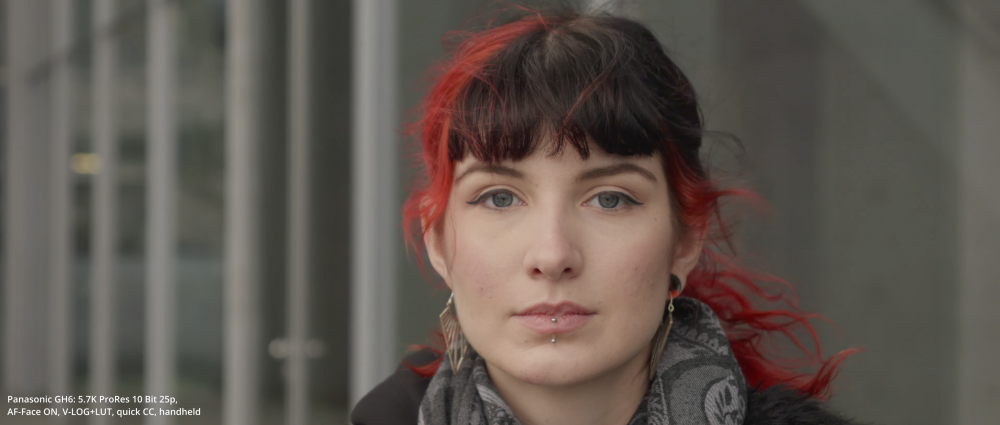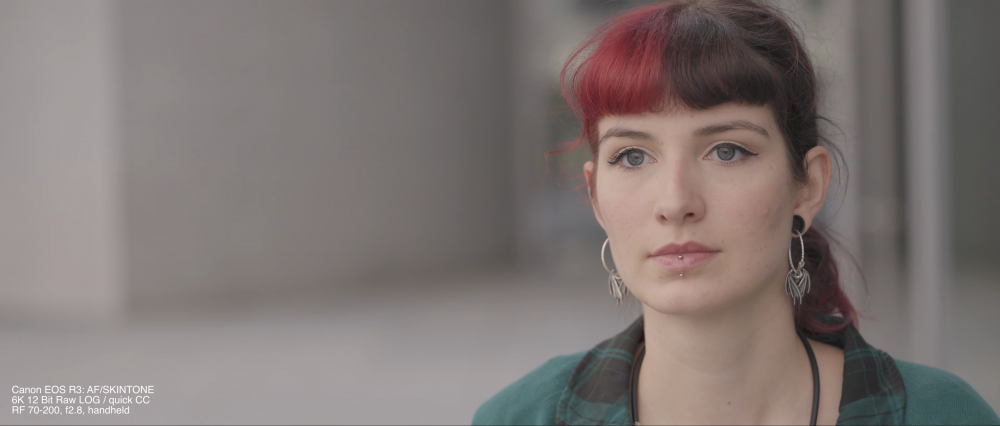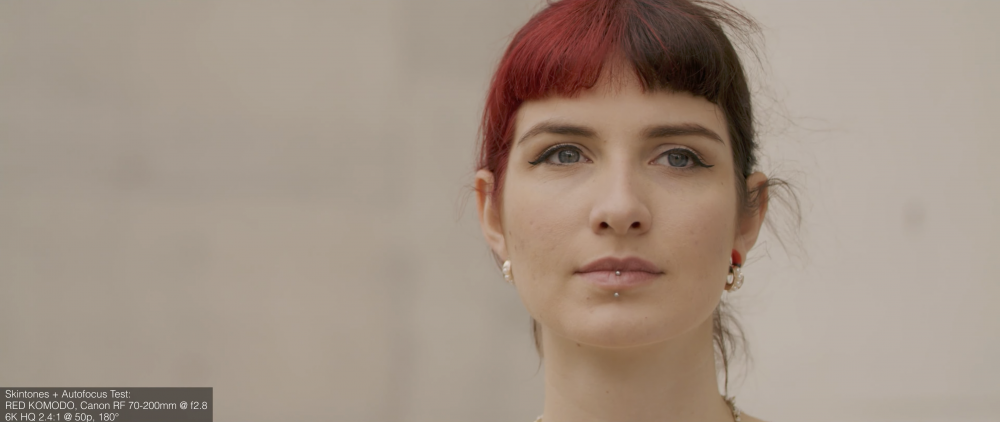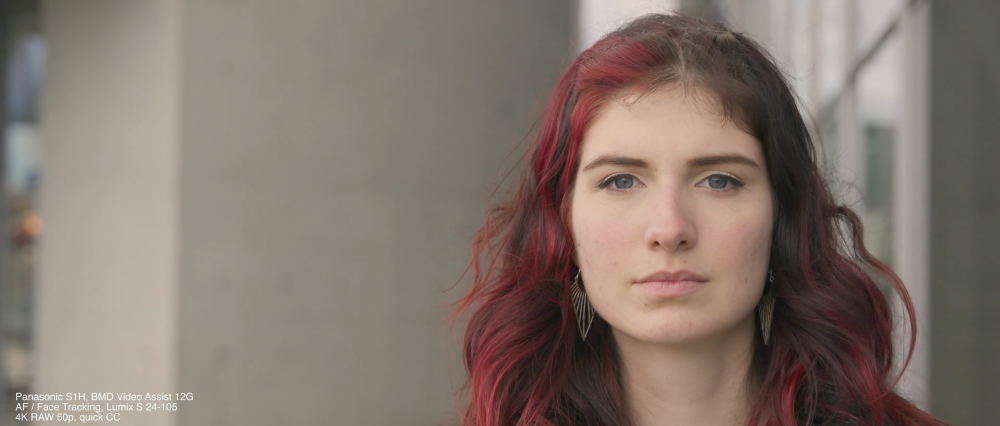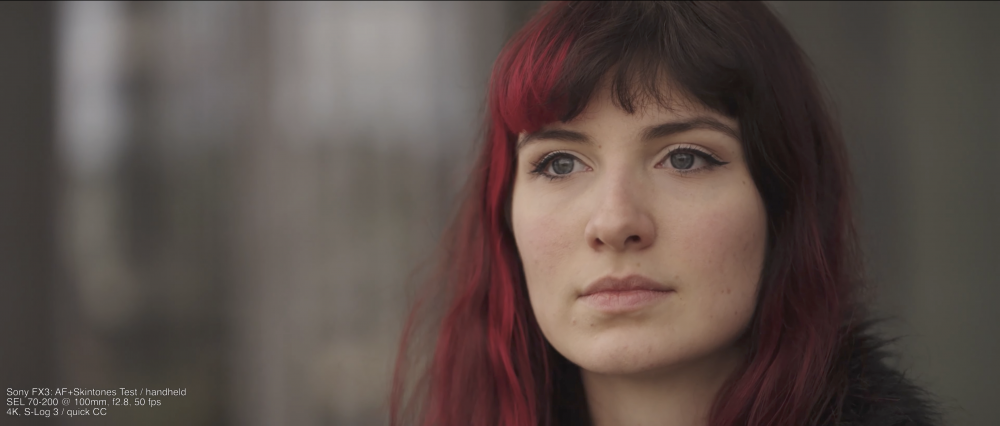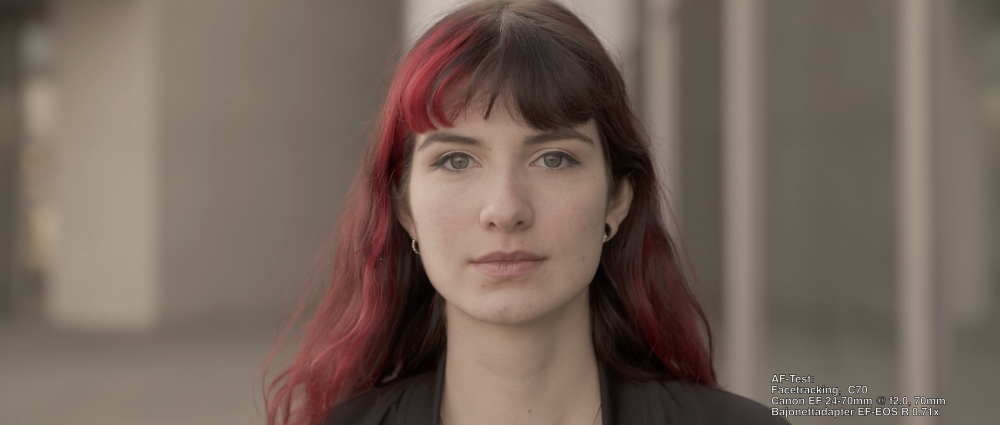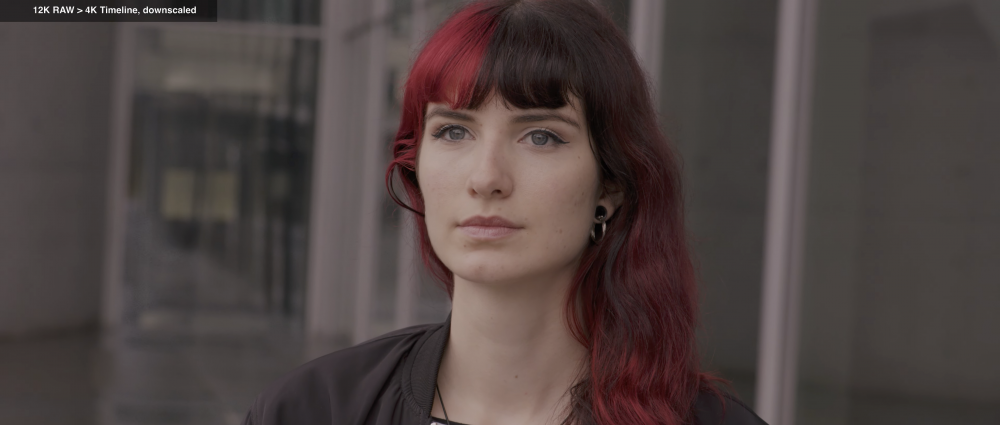-
Posts
7,891 -
Joined
-
Last visited
Content Type
Profiles
Forums
Articles
Everything posted by kye
-
I wouldn't think that the 50p readout would be different to the normal readout - both RAW outputs are at full sensor resolution with no processing, so there's no downsampling or anything going on. I prefer to shoot in Prores on this as it does a great job of removing moire etc (BM engineers are better than I am!) but it is still prone to it on sharp lenses and fine detail. I'd suggest that the only reason to change the settings in camera are to change frame-rate, otherwise you can just set it and then simply adjust aperture / focus / ND shot-to-shot, so it's a very straight-forward experience actually. If you're shooting Prores rather than RAW then in theory you should be adjusting WB too, but if you are shooting outside then there's a good argument to be made for just setting to 5600K and then when things are warmer/cooler in reality then they will show up like that on the files and that's appropriate because that's actually how it was. If you're using artificial lights then just set for those and forget. IIRC I read somewhere that the WB latitude on the Prores HQ was as good as it was in the RAW, so that's probably something else that's worth a test to confirm, but certainly my experience changing WB in-post was just lovely and I did some quite strong changes as I was shooting at and around sunset so was dealing with some quite strong WB shifts and it was all very straight-forwards and a pleasant experience.
-
I think you missed the point. The GH5S was a non-IBIS camera designed for use in externally stabilised circumstances (ie, gimbals, tripods, steadicams, vehicle mounts, etc) where the IBIS mechanism would cause problems (eg, the sensor would wobble after a bump) and a fixed sensor is the preferred design. If you rely on IBIS (as I do) the GH5ii or GH6 are the upgrades to the GH5. The GH5S was the start of a parallel line of fixed-sensor cameras that happened to come out with some improved specs and happened to come out around when the GH5 replacement would have been nice and happened to have a similar body and happened to have a similar name. Saying that "imagine how successful Panasonic would have been if they just made a gh5s with IBIS a few years ago" is basically saying that you wanted a hypothetical camera that would have been popular. So on that note.... Imagine how successful Panasonic would have been if they just made a GH6 with 18 stops of DR and internal RAW in 2014!
-
I found that grading the BMMCC images was completely different to anything I'd experienced before. I suspect it's due to the fact it's RAW and so the challenge is to build a grade starting from scratch rather than having the camera do all sorts of things for you (if you want it to or not!). This was also the case for the ML footage I took from my Canon 700D, and would be the case for the EOS-M too. I'd suggest that you find some reference footage you like and use that as a guide for getting things in the ballpark and can adjust from there. You could even shoot a test clip in both RAW and Prores and then use the Prores as a reference for what the camera is doing and as a starting point for your grade too, especially with NR and softness/sharpening.
-
I suppose it's really about how close you are to the edge of what the equipment is capable of. I've posted about the GH5's limitations and how the GH6 is better in many ways, and probably not worse in that many, cost being a notable exception of course. Truth is that I'd be nervous about buying any camera other than a GH6. I've been around long enough to hear that camera manufacturers fill them with all kind of stupid stuff that can really bite you in the backside if you don't know about it. It's normally certain combinations of things, like in certain modes certain features aren't available or don't work as well, etc. I heard semi-recently from somewhere that in full-auto a camera doesn't smoothly adjust the exposure level, but goes up or down in steps while recording. I was stunned to hear this and made me wonder what the hell else that camera (and others) does or doesn't do that is completely ridiculous. Actually, the irony is that the shot in question would probably be unusable from a 5d2 or an NX (I don't know the Oly well enough to comment). The camera was on auto-ISO and auto-SS and the Voigtlander 17.5mm was fully open at F0.95, so the SS would have been 360-degrees and there's enough noise in the shot for me to know the ISO was really being pushed. IIRC I also lowered the exposure (using exp compensation) so that the background wasn't completely obscured, pushing the subject lower into the exposure range. Note that the BTS shot, which was taken with a modern iPhone, is out-of-focus. Think about how low-light the situation must have been for a phone to not be able to focus on anything in the frame! This is one of the shots that shows how well the GH5 operates under pressure - many of my shots are right at the limits of the IBIS, SS, lens T-stop, ISO performance, and right at the limits of my ability to grade the footage and bring out the best in it. I know that many of my shots are right at this limit because many are actually past that limit and I can't salvage. That's kind of the unspoken undercurrent of this thread. Depending on how heavily you rely on the features of the GH5, there may literally not be a better camera in existence (except the GH6). Many brands offering better low-light, colour science, DR, etc etc, but IBIS is substantially worse on all options except Olympus who can match the IBIS, but don't offer every feature of the GH5 still, and definitely not the GH6. Even the FF Panasonics have their own drawbacks, the S1 and S5 are cripple-hammered because they're not the S1H, and the S1H is large and expensive and still lacks all the features I hit the limits of the stabilisation of the GH5 quite often. Mostly it's due to being cold or low blood sugar. I'm shooting with manual lenses of course, so could get better stabilisation by using an OIS lens, but you'll lose a couple of stops of low-light, and guess when you often get cold - at night.. when it's dark! In reality, there could just as easily be a thread about who hasn't upgraded from the GH5 because it is still the best compromise for all the things that you need in a camera. The image quality is actually the worst feature of the GH5 - the best features are all the ones that add up to you being able to get the shot in the first place. I took the OG BMPCC out to shoot once, for a visit to a festival in a park, and that was enough to tell me it wasn't going to work for me. The screen couldn't tilt, I couldn't see it in daylight, I could solve that with a monitor but that would double the size of the camera which defeated the point, and the poor screen meant that I couldn't focus properly, etc... I spent so long getting each nice b-roll shot (and once graded they were genuinely lovely, the ones in focus that is) that I literally lost where my wife went and had to skip part of the place to find her again. Most of the spontaneous moments had evaporated before I was able to get the focus and exposure dialled in. This is all completely appropriate and not the fault of the BMPCC - it IS a cinema camera after all! It's that life doesn't wait for the camera to be ready. Of course, the easier your shoots are, the less these things matter to you. If you hit record on your camera and know what's going to happen with the lighting and composition of the shot, even 20s from now, then the demands on the camera you choose are significantly less. Anyone who can control the action to wait for the camera has such a different experience of shooting that they practically live in a separate universe.
-
Me sitting in a row boat: a shot I got from where I was sitting: Obviously if you can light or expose better then you should, and it depends on what you're filming about how much control you have over the variables, but most of the time the most difficult shots to film are the ones where I have basically no control over what is going on. I regularly find myself right at the limits of what the GH5 can do, and I just find it annoying that the generic response is to just "film better". I asked the question on the colourist forums too and they basically had no advice except to say that shooting in nicer conditions and using a better camera were the only answers. PS, if you're not aware, standing up one one side of a row boat is ill-advised unless you want to immediately transition into underwater photography.
-
You want people to shoot travel videos, adventure videos, home videos, weddings, outdoor sports, and everything else that happens outside in a studio instead?
-
I think this is the fate of many cameras. The camera market seems to be oriented around camera size being a prerequisite for image quality, despite the fact it doesn't have to be (as evidenced by BMMCC and OG BMPCC which were affordable a decade ago). This means that there is little support in-post for the lighter cameras and less reputation. This creates a feedback loop where people who want to shoot light don't make good-looking videos because the expectation isn't there, and people who have the expectation of great images shoot with larger cameras, reinforcing the concept that small and budget friendly isn't the way to go. In response to this completely made up size=quality concept, BM decided to make the BMPCC 4K literally 3x the total size of the OG BMPCC and abandoned the delightful S16 sensor for one that looks like any other camera, and almost all evidence that small could be great was swept under the rug. Those who shoot small typically shoot in uncontrolled conditions where the lighting is mixed colour temperature and lighting ratios are difficult to deal with, leaving those who shoot in the most difficult conditions and have the least ability in post production to shoot with the cameras least able to handle those conditions, and unaware that it could have been any different.
-
The news shooter article says that normal retail price will be $3,500 or so, which seems reasonable. The price of mechanical and electronic components has plummeted over the lsat few decades thanks to centralisation in China. The factor that makes or breaks products these days is the design of the physical unit and the software that controls it. The proof is in the pudding, as they say, so I would reserve judgement until there are units in the wild, and of course, all PR materials that are real (it's common for even things like car commercials to be 3d renders now) will be under the absolute best possible circumstances. Anyone who has ever used a GoPro knows that you'd have to be luckier than a lotto winner to get shots like they put in their promos.
-
Yes, it is noteworthy, but it would be good to see some tests where the magnitude of the streaks is known. ie, are the streaks 10-stops below the bright part of the image? 20-stops? 30-stops? If we knew that then it would be easier to know which situations you might encounter a problem and which you wouldn't. This is the GH6 XYLA21 chart from CineD, and the curve from the brightest patch to the noise floor (the curve on its left) looks like it drops away into the noise floor pretty quickly, so I'd imagine that for the streaks to be visible above the noise floor maybe 1/4 of the width of the frame from the brightest areas (as in the image you showed) then the highlighted areas must be well above 13 stops or so above the flag. That seems obvious considering the flag is pretty dark and the windows are completely blown to hell, so who knows how bright they actually are.
-
If it helps, you can go to a hardware store and grab a bunch of highly-saturated free paint swatches with the brightest colours you can find (and grab some skin-coloured ones too while you're there if you don't already have a colour checker) and you can experiment with those. Assuming you're setup with a calibrated monitor and neutral studio lighting (I recommend MediaLight https://www.biaslighting.com/ and have lit my studio with their bias light and plug-in globes) then you can shoot some test shots (I recommend in full-sun for best colour accuracy, or a halogen / incandescent globe if it's not sunny outside) and then you can bring the switches into the studio and compare them to your monitor (if you have a portable high-CRI light you can light the swatches with that - keeping any spill off your monitor) and literally compare then side-by-side, which is by far more brutal a comparison than anyone would ever have looking at your work in isolation. Much easier to do that than convert your studio into a rainforest habitat! What are your thoughts on RAW vs Prores and how good Prores is at matching the capabilities of RAW? I ask because lots of folks here have only shot with h26x and RAW and the differences are obvious, but may not be aware of where Prores sits in that spectrum. lol.... Are you able to provide any examples? I've seen a number of tests that don't have these issues, so interested in seeing how people are testing this. I'm seeing random idiots all mouthing off without having any thought (or even fact) behind their opinions all the time at this point. I think I saw one person declare that the GH6 was useless because it didn't have PDAF and then raved about the S1 for a while, I was thinking "um.........??" lol.. I find that when shooting with the family on trips there's a few things that solve lots of problems. Unfortunately one of the ones that gets used most often is a credit card!!
-
On what I shoot I'm everything... director, cinematographer, audio tech, editor, colourist, and Head of Distribution. You'd think that would make things easier, but it just means that instead of a room full of people all blaming each other and feeling good about their own work, I just sit quietly wondering what went wrong and wishing I was better at literally everything! That's probably pretty easy. Shoot a few test shots, then just adjust the curves to get the right output. Specifically, Hue vs Hue, Hue vs Sat and Hue vs Lum. You'd be amazed at how powerful those are. if you start with Contrast/Pivot/Sat and then do a pass on those Hue curves you can really get a good grade very simply and easily. I use them a lot when grading videos from here in Australia where the grass is almost always patchy and somewhere between lush green and straw yellow, and trying to get a shot-to-shot match when you're pointing in different directions and seeing different bits of lawn. The final season (and one episode especially) of the show was so dark that it was difficult to follow what was going on in the show - it was a social media shit-storm, the cinematographer blamed the viewers: https://mashable.com/article/game-of-thrones-too-dark-cinematographer and websites got a lot of mileage talking about how to re-watch it so you could actually see it: https://www.theverge.com/2019/4/29/18522550/game-of-thrones-got-season-8-hbo-battle-of-winterfell-long-night-fix-tv-settings-darkness In reality, it was a large-scale test of how content is consumed in the real world because they pushed how dark the final grade was (which was appropriate to the narrative and subject matter), and the answer was that basically the entire pipeline isn't setup for dark things to even be visible, let alone somehow .. "accurate".
-
Walter Volpatto also mentioned that he's never been asked for a HDR output that wasn't limited to the P3 colour space, so it seems that you're right that 1000 nit P3 is becoming the standard. Colour accuracy is a pipe dream and (besides "how can I get my iPhone to look like an Alexa") is the topic that gets the colourists the most excited. The best approach that I've seen the colourists take is: grade on a calibrated display keep a calibrated consumer-grade 709 display handy and check it every so often to make sure you're not doing anything stupid get whatever display the Director is viewing your work on and check it on that too once it leaves your studio, forget about it whenever someone important (other than the Director) starts yelling at you incoherently about the colour being completely screwed, arrange to have them visit your studio and show them what it looks like on your reference display and make sure to explain in great detail how expensive and calibrated everything is If you want to talk about accuracy, let's start the conversation discussing the final season of Game of Thrones...... It seems to be an approach taken by other manufacturers too - shoot a scene at "correct" exposure on multiple models of their cameras using their standard log profile and you should be able to pull all the footage into post, apply their LUT or CST, and everything should match across all the cameras. Canon did that with the XC10 - matching it to the C-series line, which was why it took the same ridiculously expensive media as the C200/300 but didn't use the cards to even remotely near their performance, and used the C-Log profile but didn't use the full 0-1024 values but instead mapped the XC10 limited DR to where that DR lined up with the same values coming from a C500 or whatever. In the case of the XC10 it meant they basically crippled the camera for the sake of compatibility, but it would have been great to be able to use these for BTS and reference use (which seemed to be something they did) and not have to have a separate colour pipeline in post, which would have been really useful for the VFX folks who might want to see the setups and might also want a colour reference from that.
-
I thought this video was interesting...
-
I can definitely see it as a crutch for narrative film-making. I'm exploring this in the videos I'm looking at and my own work, which for travel is mostly montages with music. The works I'm analysing seem to use the intensity of cuts as an added device to build and release tension along with the music and wider sound design. To a certain extent it's like b-roll is part of sound design and as long as the visuals are remotely relevant then you can kind of cut them up in whatever way you want to, creating everything from a slow peaceful progression to frantic wall-of-sound-and-visuals type moments. There was a particularly good example of this in one of the Parts Unknown episodes in a high-pressure region (IIRC it might have been Beirut) where they built up to fast cutting of b-roll of the signs of war there / a heavy metal rock band / and the whistling of a pressure pot steam valve in full release. ThusGuyEdits did an interesting video on that.... Definitely editing for short-attention spans...!
-
Some grabs (all from YT 4K mode using screen capture tool)... all from: https://www.youtube.com/channel/UCeYoFHiCGpoJYofP26ZpSaQ GH6 R5C R3 Komodo S1H FX3 C70 UMP12K I tried to grab the highest resolution / best codec images. I'm not really sure how much we're looking at the cameras and how much we're looking at the LUTs, presumably that the manufacturer supplied (hopefully!). It would be fascinating to put each of these through a CST to LogC and then put them all through the LogC-709 LUT from ARRI to get the same colour science.
-
That's probably the best one that's been out so far. Especially considering they do the same test with same model at same location for multiple cameras. Unfortunately the weather is different all the time so it's not controlled the way that a studio test would be. What were your thoughts about the image?
-
Batman just reminds me of spoiled 4 year olds feeling entitled to do WTF they want in the supermarket because they're wearing a costume they got from grandma at xmas. I have zero interest in seeing this stuff. I did enjoy Guardians of the Galaxy, and Dr Strange, but they're making all the crossovers now so you have to see whatever person X did in the person Y film to keep up. In 10 years it will have fully transformed into an action-comedy series "Marvel: Episode 32 - The one where they eat chips and save the world from armageddon using only a plastic fork".
-
I agree about the GH5 having a sharpened / NR look. That's one of the reasons I'm keen to see how the GH6 renders its downsampled Prores. I'd probably shoot 1080p Prores HQ, or perhaps a slightly higher resolution if they have one, like a 3K one. In terms of the GH6 vs the P4K, the GH6 is far more neutral than the P4K in latitude tests. (Unfortunately there's only a few P4K images that I can find. If you have any others then please share - the GH6 test from CineD has more of the GH6.) GH6 - 4 stops under NR: P4K has colour shift issues at 4 stops under....... That's true - a few cameras support both BM and Atomos recorders. I was talking about getting internal RAW though, which I still don't think they'd do as it would essentially skewer the relationship with Atomos. I think the footage released so far has been pretty random and mostly not that helpful. What we really need is someone to hire a model and a nice cine prime for a day and just go out and shoot in the sun, in the shade, and do some sitting tests in with a colour checker in controlled conditions and just cycle through the codecs, perhaps going under and over a few stops to see the latitude of each codec. GH6: GH6 is unusable at -5 stops. P6K starts to have noise and colour shifts at -5 stops: A74: -4 stops looks clean and -5 with NR is still clean but shifts in colour: GH5ii: -4 is fine and -5 is ok but has colour shifts FP tests - CineD compared exposures to "ETTR" so no idea WTH that means: CineD certainly have no standard test approach for latitude tests - almost no cameras have over-exposures pulled back and the under testing seems erratic. Komodo: BGH1: -5 is noisy but colour is relatively good A7S3: -5 is good with NR, but a bit messy without it S5: starts having issues at -3 stops: R5: Things start to go bad at -5 Zcam e2-f6: colour shifts starting pretty early in the Prores: but creep into the RAW too: Not too sure what to make of all of that, considering we don't really have over-exposure tests for most? but, it seems that most cameras require NR at -4 and fall apart at around -5, with some sliding into terrible colour shifts and others being relatively neutral, with the GH6 on the neutral side.
-
Great to hear!
-
I'd doubt that it would help with the corner warping problem. I suspect that it is simply a side effect of how the IBIS mechanism works and there's been no talk about an innovation in the stabilisation approach, just that it's now got more stops of stabilisation.
-
Sorry to hear this - it's probably too expensive to fix. A few thoughts - it could be a faulty sensor.. in a nice clean environment maybe give it a gentle blow out with a rocket blower to remove any stray fibres or dust that might be interfering with the mechanism. You could try flashing the firmware again on it, assuming it will let you, as maybe that has gotten a little corrupted over time perhaps. Otherwise, that flipping it around trick might be enough, depending on your shooting style and situation.
-
Wow, the S1 has no ALL-I codecs? That's a bummer. The P4K has about the same DR as the GH6 in DR Boost mode - 11.6 / 12.7 vs 11.5 / 12.8 (Source is the P6K tests where the make some comments about the P4K: https://www.cined.com/blackmagic-pocket-cinema-camera-6k-lab-test-dynamic-range-latitude-rolling-shutter-more/) From my perspective the GH6 and P4K are so incredibly different that they're incomparable. You'd have to be shooting in pretty narrow and controlled conditions for their differences to not be relevant - IBIS, battery life, photo mode, automatic settings, etc etc. I doubt it. They've announced Prores RAW with Atomos and I doubt they'll provide a second RAW option - most cameras don't even provide one RAW option!!
-
Some thoughts..... Think of the total ecosystem that you have This includes cameras, lenses, batteries and chargers, and all your accessories, and then build a system that works for you. Think about failures and having equipment redundancy too. My travel setup is two MFT cameras and an action camera. If I want to shoot simultaneously then I can use the same lenses across the two bodies. If my action camera dies I can use a wide on a second body to emulate it. If my main camera (GH5) and lens (Voigt 17.5mm) and mic (Rode VMP) disappear then I have backups for those three (GX85, 14mm f2.5, Rode Video Micro) which are small and I can easily carry as a spare. If my backup / 2nd setup dies then I can use my action camera in a pinch and there's also my phone. The difference in DoF is 2 between MFT and FF, so to match the FOV and DoF of a 50mm at F4 on a FF camera, you would need a 25mm F2 lens for an MFT camera. But you should also think about the base ISO of 2000 on the GH6 as I'd assume you'd be using V-Log and DR Boost, which might require new NDs to suit the new lenses you'll probably have to buy. Don't just think of the fact that MFT has faster lenses with the same DoF, because the sensor is smaller and therefore has higher noise and therefore requires more light to get the same performance, but then technology of the sensor and processing all apply and then there's the sensors with dual-ISO or dual-gain and then there's blah blah blah blah. Long story short - there are too many variables that factor in to be able to predict low-light capability. The only real way to compare low-light is to look at a test of the two cameras you're comparing shooting the same scene with equivalent lenses.
-
Actually, what I said was "I've heard that most professional productions shoot Prores rather than RAW, and that RAW is typically only used by the big budget productions and by amateurs." and that's when this side-conversation started. I'm still keen to hear more about how often and why productions would shoot Prores even on cameras that can shoot raw. I figure the explanation is probably a combination of it being simpler to work with (as all software can play it) and that its image quality is good enough.





